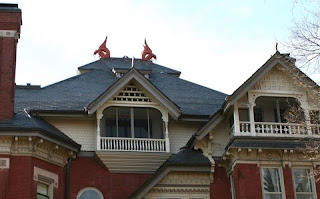 It was late morning when the smell of freshly baked bread drew me to Boudin Bakery, within view of San Francisco Bay. A street musician created sonorous music as he tapped enthusiastically on a twin pair of over-sized bongos, and raucous gulls swooped across parking lots and buildings.
It was late morning when the smell of freshly baked bread drew me to Boudin Bakery, within view of San Francisco Bay. A street musician created sonorous music as he tapped enthusiastically on a twin pair of over-sized bongos, and raucous gulls swooped across parking lots and buildings.Inside the bakery, more than 150 years of history coalesced in dozens of fresh sourdough loaves, paying homage to a tradition that began when the Gold Rush '49ers merged traditional French baking techniques and 'sour' dough. In fact, today's loaves are still made with a portion of the original 'mother' dough, which has been divided and replenished with flour and water each day since the first batch was made.
With a crunchy crust and a chewy center, a 24-ounce loaf only cost about $4. If I hadn't been so full from breakfast I might have grabbed lunch in Bistro Boudin, the company's first full-service restaurant. And if I hadn't been so pressed for time I would have toured the company's on-site museum - full of city history and antique photos - or stopped by the demonstration bakery. But, sometimes, it's also nice to have things you can look forward to during your next visit.






